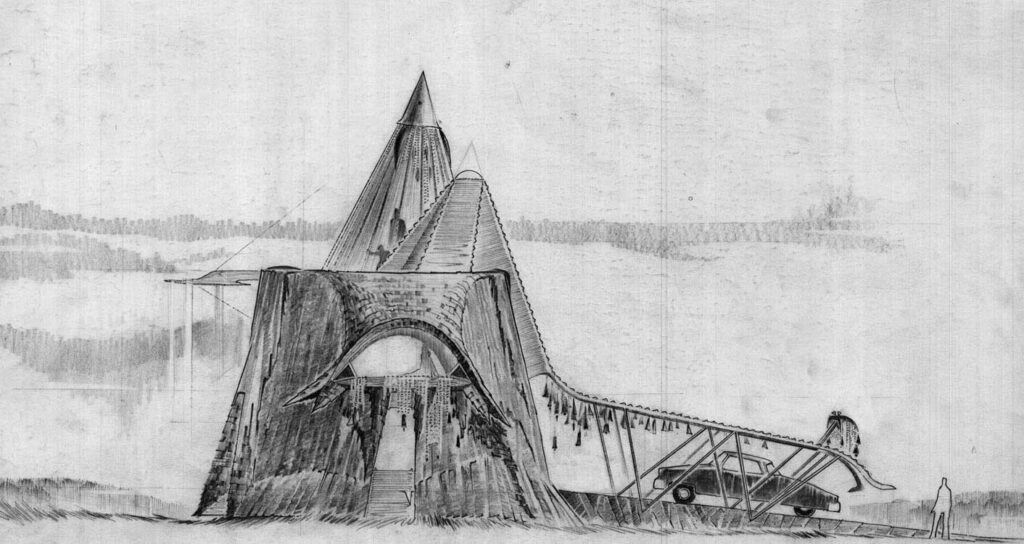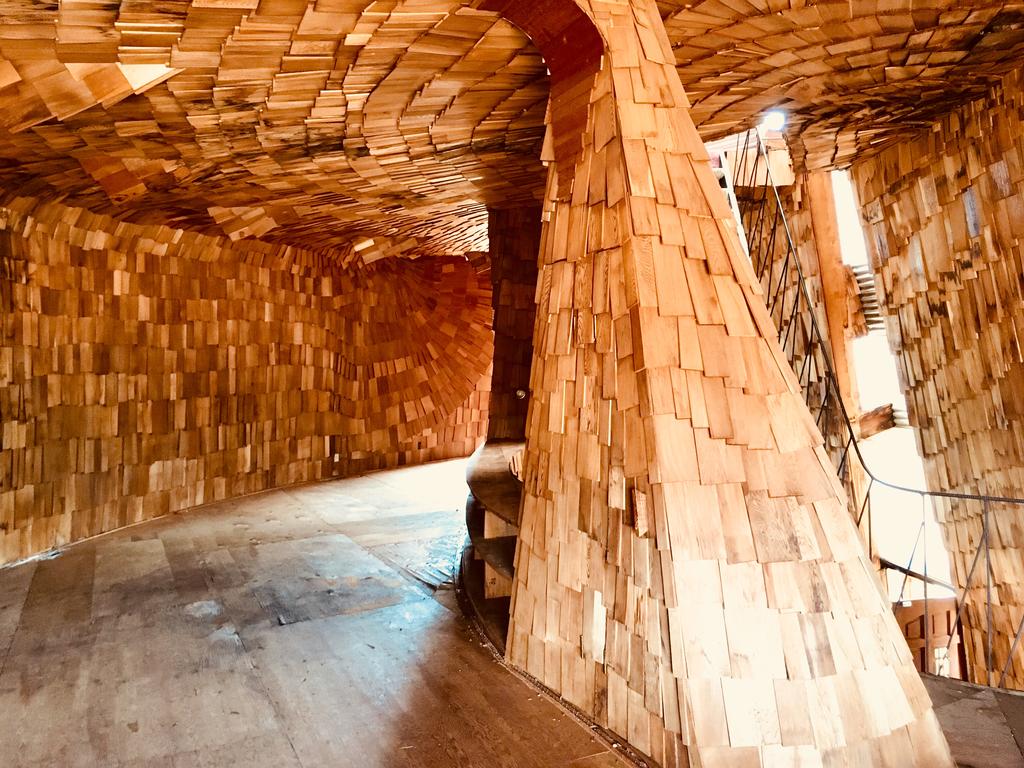The first time I ever laid eyes on The Prairie House was during a lecture taught by Professor Bryan Bloom. Oddly enough, it wasn’t an architecture class but Bryan has always done an amazing job of teaching students to explore the built environment outside of what their typical career degree entails. Initially, I though this house looked so odd that calling it a “Chicken House” was a compliment. Who would want to live in something like this?
It wasn’t until a few years after that introductory construction class that I actually got to visit The Prairie House thanks to Bryan. We hosted a small gathering there to celebrate the completion of our classes’ Tiny Home project. Bryan just so happened to know the owner and was able to let us look around.

This is perhaps the first house I’ve ever been in / seen in person that wasn’t a traditional style home. I remember thinking the outside looked like a pile of scrap lumber that was waiting to be burned. The weathered cedar was more reminiscent of suburban fences that have aged over time.

When I walked inside my initial assumption that it would look dilapidated changed instantly. While it was sparse and the material simplistic the cedar shingles still had a rich red/brown hue. It looks almost new aside from a few water stains from a leaking roof. The tar paper that cladded the outside under the cedar has held up well over the years it seems.
The most impressive thing for me was the sheer amount of space hidden away inside. While you standing outside it doesn’t look that wide, or tall for that matter but changes once you go inside where you get the sense that it could go on forever. There are two stories and even a roof-top access that could double as a patio…..not a great idea on a TPO style roof.

I really liked visiting this house because it showed me that appearances can be deceiving and you never know what something will look like once you peel back that first layer. While an idea might be outlandish and foreign, you can’t make assumptions until you’ve seen and experienced it in person. There was talk that the owner might want to restore it and a coalition of Architecture and Construction Science students might get to participate (free labor). I wish it would have happened during my time at OU, it would have been a very interesting project.

